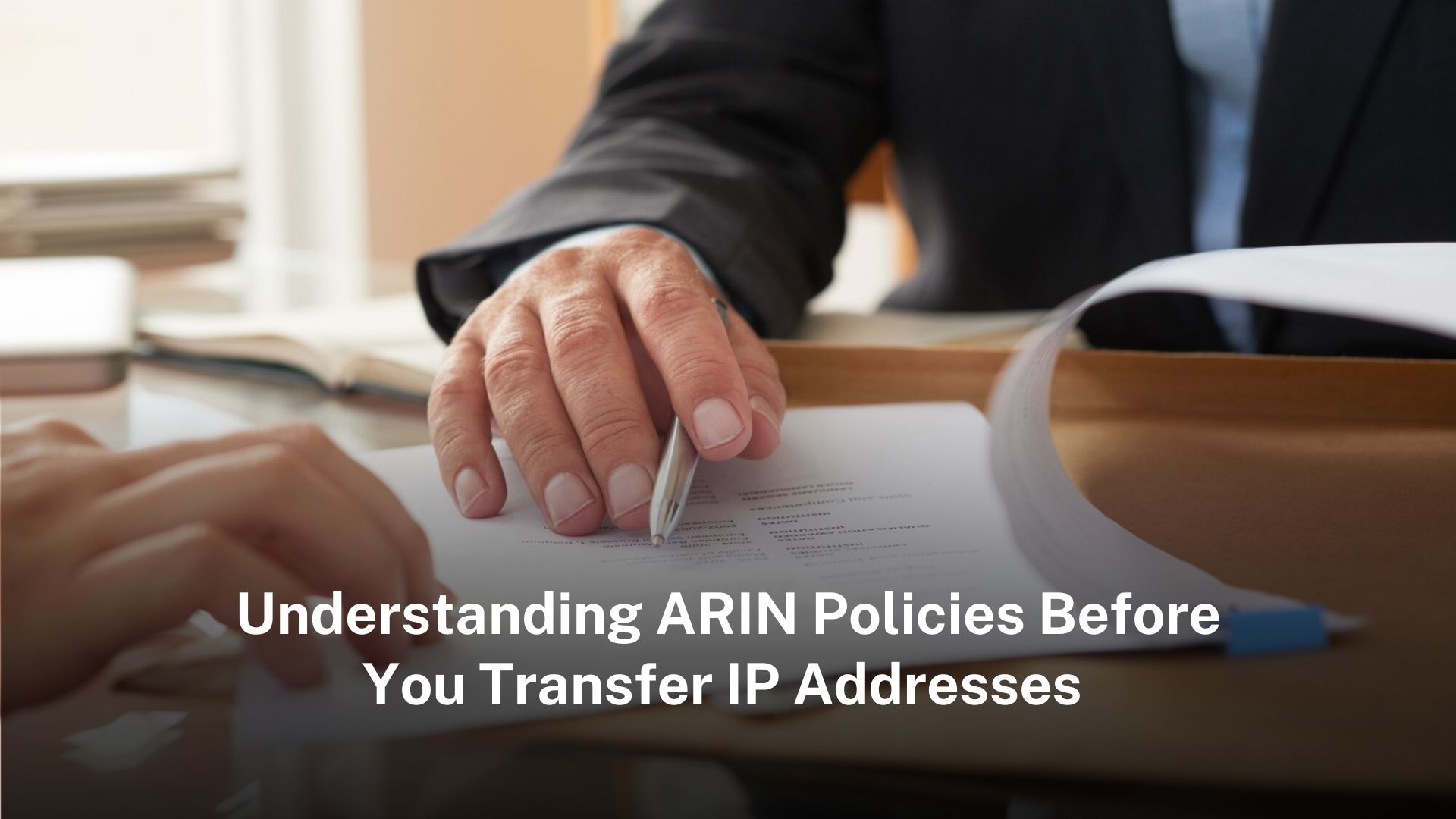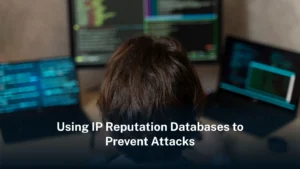• Before transferring IP addresses through ARIN, it’s important to clearly understand the eligibility and requirements for both parties to avoid compliance issues.
Table of Contents
Toggle• Preparing supporting documents and usage justification in advance can speed up approval and ensure a smooth transfer.
Why ARIN Transfer Policies Matter
ARIN, the American Registry for Internet Numbers, has rules to prevent such problems. These rules ensure that IP address transfers are done fairly and only between organizations that genuinely need them. According to John Curran, former ARIN CEO, “The transfer process exists to make sure IPv4 addresses are used efficiently and to prevent speculation that could hurt the wider internet community.” His words make it clear that transfers are not just administrative tasks; they are a safeguard for the broader internet ecosystem.IP addresses are limited, so managing them carefully is essential to prevent hoarding or misuse. ARIN’s rules make sure transfers happen fairly and only between organizations that actually need them. As John Curran, former ARIN CEO, said, “The transfer process exists to make sure IPv4 addresses are used efficiently and to prevent speculation that could hurt the wider internet community.”
In practice, ARIN’s policies require both sides in a transfer to meet specific criteria. The recipient must demonstrate an immediate need for the addresses, showing that they will use them efficiently within a defined period. The sender must confirm they have full legal ownership of the addresses and that there are no disputes over them.
Key ARIN Transfer Requirements
ARIN also asks for detailed information, like current usage and future growth plans.The sender must confirm they legally own the addresses. This involves checking registration records and making sure there are no disputes. The sender must also confirm legal ownership of the addresses. This means reviewing registration records carefully and ensuring there are no disputes or claims from other parties. IP broker Mark McFadden highlights that “many transfers fall through because the seller doesn’t have clear ownership. Doing your homework is essential to avoid wasted time and money.”A simple claim of “we need more addresses” is not enough; ARIN wants evidence that the resources will be put to practical use and that the organization has a realistic growth plan. IP broker Mark McFadden emphasizes this point, saying that “many transfers fall through because the seller doesn’t have clear ownership. Doing your homework is essential to avoid wasted time and money.”
Common Pitfalls
One common mistake is underestimating the paperwork. ARIN carefully reviews every request, and missing or wrong information can lead to rejection. Another problem is not checking that addresses are correctly listed in ARIN’s database. If they are under another organization, fixing the records can take weeks.
Legal issues can also crop up if transfer agreements are vague. Lawyer Emily Taylor notes, “We’ve seen deals fall apart months later because the contracts didn’t clearly spell out who owned the addresses.”Legal agreements are another area where problems often arise. Vague or poorly drafted contracts between the buyer and seller can result in disputes over ownership long after the transfer is completed.
The hidden complexities of ARIN’s transfer evaluation process
While ARIN’s transfer policies appear straightforward on paper, many organisations discover unexpected challenges during the evaluation phase. The registry employs a rigorous verification system that goes beyond simple paperwork checks. According to network architect Sarah Roberts, “What many don’t realise is that ARIN’s staff conduct technical audits on request histories. They’ll compare your current application against past requests to spot inconsistencies in your justification narrative.”
This forensic approach catches applicants who attempt to circumvent policies through creative justification. A 2022 case study published by the Internet Governance Project revealed how a cloud provider’s transfer request was denied when ARIN discovered their projected growth figures contradicted earlier submissions. The registry maintains detailed records spanning decades, creating an institutional memory that surprises many first-time transfer participants.
The evolving landscape of IPv4 transfers
With IPv4 exhaustion becoming more acute, ARIN has gradually shifted from needs-based assessments to market-facilitation roles. However, this transition hasn’t eliminated bureaucracy. “We’re seeing more hybrid approaches,” explains IP broker David Goldstein. “ARIN still requires justification, but now weighs market factors more heavily in borderline cases.” This creates uncertainty for applicants, as the same request might receive different outcomes depending on current registry priorities and remaining inventory levels. The Evolving Landscape of IPv4 Transfers. As IPv4 addresses become scarcer, the way ARIN handles transfers has been changing. In the past, the focus was almost entirely on demonstrating immediate need. Today, while organizations still need to justify their requests, ARIN increasingly considers market conditions as well. This shift means that two organizations with similar requests might receive different outcomes depending on current registry priorities or how much inventory remains.
David Goldstein, an experienced IP broker, notes, “We’re seeing more hybrid approaches. ARIN still asks for justification, but now market factors carry more weight in borderline cases.” For companies planning their network growth, this adds an extra layer of uncertainty. Transfers are no longer just a matter of filling out forms—they require careful planning and strategy.
This is where a solid Network Resource Strategy (NRS) comes into play. Organizations that understand their current IP usage, forecast future growth, and plan transfers as part of a broader network strategy are much better positioned to succeed. An NRS allows companies to show ARIN that they are not just chasing addresses, but actively managing their network resources in a structured, efficient way.
Practical realities of post-transfer compliance
Many organisations focus solely on securing approval, neglecting ongoing obligations. ARIN conducts random audits of address usage twelve months post-transfer, requiring recipients to demonstrate actual utilisation matching their original justification. Network engineer Miguel Fernandez recounts a common scenario: “We’ve had clients panic when ARIN requested switch configurations and DHCP logs to prove active deployment. Those who exaggerated their needs face revocation risks.”
The Human Side of IP Transfers: Stories from the Trenches
Behind every IP address transfer request filed with ARIN, there’s a real-world business story – some straightforward, others surprisingly messy. Take the case of a midwestern hospital system that nearly delayed its telehealth expansion by six months because nobody checked if their legacy /22 block was properly documented. “We assumed the addresses we’d been using for years were correctly registered,” their network administrator told me. “Turns out they were still under the previous IT vendor’s name from 2009.”
These aren’t just technical hiccups. When a Texas manufacturing company acquired a competitor last year, they discovered the target firm’s entire IP allocation was tied up as collateral in an obscure loan agreement. “The bank wasn’t even aware they had a security interest in IP addresses,” said the M&A lawyer who handled the case. “We spent three months untangling that before ARIN would approve the transfer.”
Why Paperwork Alone Isn’t Enough
ARIN’s staff aren’t just box-checkers – they’re trained to spot inconsistencies that might indicate problems. I spoke with a former evaluation team member who described catching a transfer request where the “needs assessment” had clearly been copied from a template. “The applicant claimed they needed 4,000 addresses for a new IoT deployment, but their supporting documents showed they were a dental practice with three locations,” they said. “We see several of these every month.”
The human element cuts both ways. One network engineer shared how an ARIN analyst helped salvage their transfer when initial paperwork was rejected. “Instead of just sending a form letter, she called us and walked through exactly what documentation we were missing. Saved us weeks of back-and-forth.”
The Emotional Toll of Getting It Wrong
What you won’t find in ARIN’s policy documents is the stress these processes create. A CTO at a growing SaaS company described the “sick feeling” when they realized their IP transfer delay might force them to turn away new customers. “We had the funding, the infrastructure, and the demand – but we were stuck waiting for approval while our competitors kept moving.” These stories highlight why experienced professionals approach ARIN transfers with both respect and healthy paranoia. As one veteran IP broker put it: “The difference between a smooth transfer and a nightmare often comes down to one question – did someone take the time to think like ARIN before hitting submit?”
ARIN’s policies cover procedures and requirements, but they don’t capture the stress organizations feel when transfers get delayed. One CTO at a growing SaaS company described the anxiety of realizing that a pending IP transfer could force them to turn away new customers.
Stories like this show why experienced professionals handle ARIN transfers with both caution and detailed planning. As one veteran IP broker explained, “The difference between a smooth transfer and a nightmare often comes down to whether someone thought through the process from ARIN’s perspective before submitting the request.”
Using NRS to Make IP Transfers Work
An NRS helps a company understand exactly what IP addresses it has, how they are being used, and what it will need in the future. When you can show ARIN a clear plan, it makes the approval process much smoother.
A good NRS starts with a simple idea: treat IP addresses like any other business asset. You need to know how many you’re using today, how many you will need in six months or a year, and where any extra addresses can be put to good use. This isn’t just for ARIN—it helps internal teams see the big picture and avoid wasting addresses or money.
Legal and administrative problems are another reason an NRS matters. Many transfers fail because the seller doesn’t have proper documentation or the buyer hasn’t thought through future needs. If a company plans to expand services or open new offices, the NRS shows exactly how new addresses will fit into the network. ARIN can see that the resources are needed and will be used wisely.
FAQs
1.How strict is ARIN about exact utilisation percentages?
They expect realistic figures, not perfection. Showing 80% utilisation with a clear growth plan works better than claiming 100% with no documentation.
2.Can we transfer IPs to an overseas subsidiary?
Yes, but it triggers additional reviews under the global transfer policy. Budget extra time.
3.What happens if our justification changes after approval?
You must update ARIN. One company got blacklisted for repurposing a “data center expansion” block for resale.
4.Are lawyers really necessary?
For transfers over /20 or involving mergers, absolutely. The $5,000 in legal fees beats a six-month delay.
5.How does ARIN treat transfers between affiliates?
Same scrutiny as third-party transfers. The days of easy intra-company moves ended with IPv4 exhaustion.





Thank you for the auspicious writeup It in fact was a amusement account it Look advanced to far added agreeable from you However how can we communicate
Simply desire to say your article is as surprising The clearness in your post is simply excellent and i could assume you are an expert on this subject Fine with your permission let me to grab your feed to keep up to date with forthcoming post Thanks a million and please carry on the gratifying work
Your writing has a way of resonating with me on a deep level. I appreciate the honesty and authenticity you bring to every post. Thank you for sharing your journey with us.
I simply could not go away your web site prior to suggesting that I really enjoyed the standard info a person supply on your guests Is going to be back incessantly to investigate crosscheck new posts
Ive read several just right stuff here Certainly price bookmarking for revisiting I wonder how a lot effort you place to create this kind of great informative website
Your blog has quickly become one of my favorites. Your writing is both insightful and thought-provoking, and I always come away from your posts feeling inspired. Keep up the phenomenal work!
My brother recommended I might like this blog. He was entirely right. This post truly made my day. You cann’t imagine just how much time I had spent for this information! Thanks!